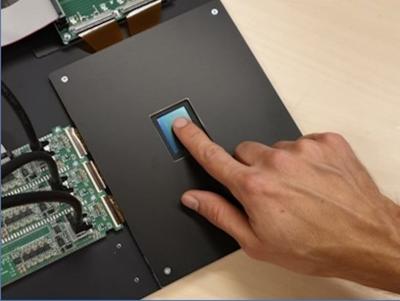Researchers from TNO at Holst Centre, Solliance and TU/e have jointly developed a thin and flexible perovskite-based scanner for fingerprints.

Low-resolution image-sensor arrays have been demonstrated in the past, but the high-resolution, high pixel-count image sensors suitable for commercial applications have not yet been truly achieved. The thin and flexible scanner in this new work is based on metal-halide perovskites (MHPs). Gerwin Gelinck, Chief Technology Officer TNO at Holst Centre, elaborates on the new study: 'Perovskites are marvelous materials! For the first time we show that these materials are also very good for light imaging and sensing applications. When combined with display-like transistors, we made a scanner that can capture high-resolution color images as well as biometric fingerprinting'.
Albert van Breemen, Senior Researcher TNO at Holst Centre who led the research, said: 'Because the imager is very thin, it can be wrapped around round objects. This is for instance advantageous in high-resolution, nail-to-nail biometric fingerprint scanning. Furthermore, we show that it can detect your heartbeat simultaneously, which is another safety feature. We believe that our perovskite image sensors are ideal for integration into everyday objects such as the backside of mobile phones and door handles as part of unobtrusive, secure-access control systems.'
The adoption of this technology may be accelerated by tailoring the electro-optical properties of perovskites, as well as upscaling to larger active areas by using slot-die coating, for example. Light-sensing across both the visible and infrared spectrum could be enhanced, leading to improved applications in medical imaging, surveillance, and optical communication. Gerwin and Albert concluded: "We very much look forward to seeing where this technology will take us next.'



